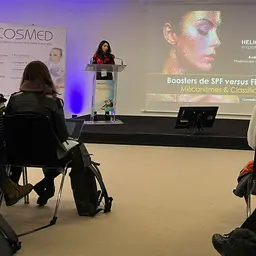
For perfumers and scientists alike, smell is unique among the senses. Its defining characteristic is its strong tie with emotions and with memory. At the last Olfaction & Perspectives congress held by Cosmetic Valley, ISIPCA, and the Paris-Ile-de-France Chamber of Commerce and Industry, Jane Plailly, a cognitive neuroscience researcher with the CNRS, revealed what the study of the brain can teach us on the characteristics of human olfaction.
Observing the brain while an odour is being perceived leads to obvious conclusions about the cerebral areas that are activated: those corresponding to emotion and memory. This special relationship, which can be observed on several levels (anatomical, behavioural, and functional), has made it possible for neuroscience to create a portrait of the sense of smell, which was once thought to be minor and was not analysed in detail, as a complex and subtle sense deeply related to our innermost beings. This specificity, in addition to formulation research, can help perfume and cosmetics designers to ensure the success, longevity, and originality of their products.
From the perception of an odour to the brain
To begin, Ms Plailly summed up the two possible ways that an odour can be perceived. Either by direct route, via inhalation through the nostrils, in which the odour penetrates the mucous membrane and reaches the olfactory bulb, the first region of the brain to process information related to smells. Odours can also reach the nasal cavity via the retronasal route. When we eat food, chemical molecules are released into the mouth and come into contact with the palate, the tongue, and saliva when we chew. They then …













